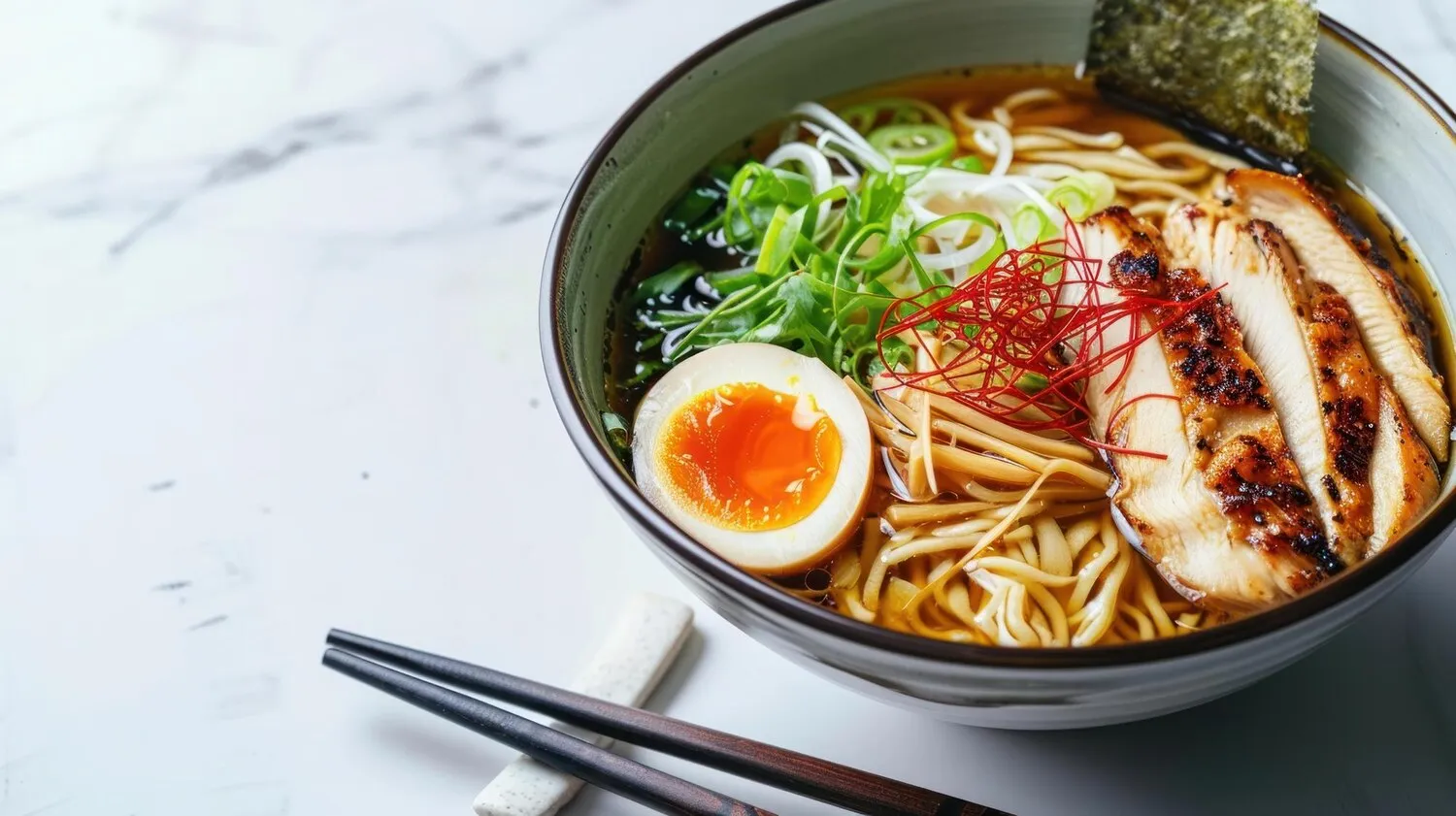
Pho (Various Types)
A traditional Vietnamese noodle soup consisting of broth, rice noodles, herbs, and meat (usually beef or chicken). They offer different types of pho based on meat and broth styles.
Nutrition Facts
* The % Daily Value (DV) tells you how much a nutrient in a serving of food contributes to a daily diet. 2,000 calories a day is used for general nutrition advice.
Pho City Vietnamese Chestermere
Pho's origins are traced back to the early 20th century in northern Vietnam, influenced by both Chinese and French culinary traditions. Some believe it evolved from a similar Cantonese noodle soup, while others attribute its creation to French colonial influence and the demand for beef during that period. The dish gained popularity and spread throughout Vietnam, particularly after the division of the country in 1954, leading to regional variations and adaptations.
Pho is more than just a dish in Vietnam; it's a national symbol, a source of pride, and an integral part of daily life. It represents family gatherings, street food culture, and the diverse regional culinary landscape of the country.
National Dish
Pho is widely considered Vietnam's national dish, representing the country's culinary heritage and cultural identity. It's often the first dish that comes to mind when people think of Vietnamese cuisine.
Street Food Staple
Pho is a popular street food, enjoyed by people of all ages and backgrounds. Street vendors and pho shops can be found throughout Vietnam, serving up steaming bowls of pho from early morning until late at night.
Family Tradition
Making pho is often a family tradition, with recipes passed down through generations. Families may have their own unique variations of pho, reflecting their regional culinary preferences and personal tastes.
Regional Variations
While the basic components of pho remain the same, regional variations exist, particularly between northern and southern Vietnam. Northern pho often features a clearer broth and simpler toppings, while southern pho tends to be sweeter and more complex, with a wider array of herbs and sauces.
Pho is characterized by its fragrant and savory broth, delicate rice noodles, fresh herbs, and tender meat, offering a balanced and complex flavor profile.
The broth is the heart of pho, traditionally simmered for hours or even days with beef bones, charred onions, ginger, and a blend of spices like star anise, cinnamon, cloves, and coriander seeds. This creates a rich, aromatic, and umami-rich base. Rice noodles, known as bánh phở, are flat and chewy, providing a neutral canvas for the broth and toppings. The meat, typically thinly sliced beef (phở bò) or chicken (phở gà), adds protein and texture. A generous topping of fresh herbs like cilantro, Thai basil, mint, and scallions, along with bean sprouts, lime wedges, and chili peppers, adds brightness, freshness, and customizable spice.
Customize Your Bowl
Don't be afraid to customize your bowl of pho with the available condiments. Add lime juice for brightness, chili sauce or sriracha for heat, and hoisin sauce for sweetness. Experiment to find your perfect flavor combination.
Slurp the Noodles
It's perfectly acceptable (and even encouraged) to slurp the noodles in Vietnam. It's part of the experience and helps to enhance the flavors.
Enjoy the Broth
The broth is the heart of pho, so take your time to savor it. Sip it slowly and appreciate the complex flavors and aromas.
Try Different Types
Explore the different types of pho available, such as phở bò (beef), phở gà (chicken), and phở chay (vegetarian), to discover your favorite.
Explore additional Soup, Noodles dishes and restaurants
Explore Soup, NoodlesDiscover top dining spots and culinary experiences in Chestermere.
Explore ChestermereLearn more about the food culture, restaurant scene, and culinary heritage of Canada.
Explore Canada